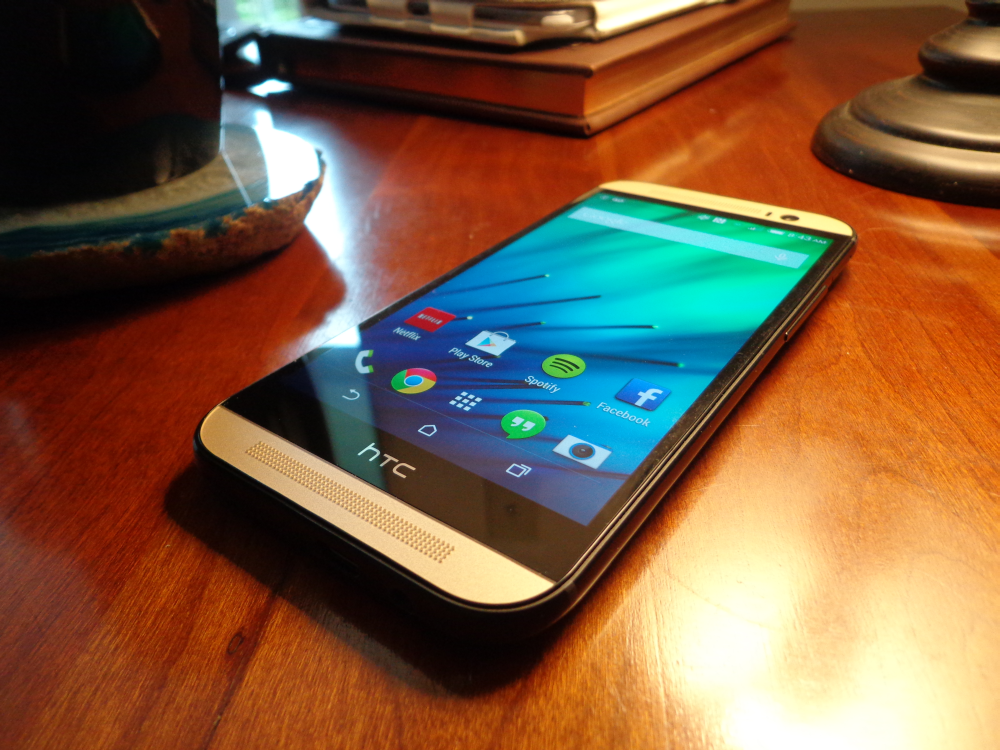
It’s no secret that I’ve been a pretty avid fan of the HTC One series of devices since the M7 was first introduced last year. I was blown away by the dual front-facing speakers, the aluminum unibody design was beautiful, I thought Sense was a great Android UI, and I was even pleased with the low-light capabilities of the odd 4-megapixel UltraPixel camera the phone sported. I had hoped that HTC would continue to make great phones like the M7 from then on. Fortunately, for the most part, they did with the release of the HTC One (M8).
Despite the changes made with the M8, however, HTC made one mistake that might have hindered the M8’s full potential success: they kept the same 4-megapixel UltraPixel camera, despite its controversy in the M7. Even I was skeptical when I first read about the low megapixel density in the M7, but after actually using the camera I found that I really enjoyed the way that it took photos. As long as I didn’t crop or zoom, the pictures usually looked pretty decent.
But a lot of people like to crop and zoom their photos, so it’s a disappointment when you do and it looks grainy. That was usually the case with the M7, and also the M8. While I think it was an acceptable flaw with the M7 (being the first generation and all) I believe this was something that many where expecting to change with the M8 and didn’t. It’s for this reason that I hope, and sincerely believe, will change with the next generation HTC One that will presumably come out next year. It has to happen, or else I believe people will flock elsewhere. A camera might not be the most important feature in a smartphone, but it’s generally a preference to have the best that can be offered at the time - and a 4-megapixel sounds very 2010. Even an 8-megapixel camera would probably suffice. Just do something to up that megapixel count.
The second thing that I think HTC could offer in the next One is to follow the path LG has recently made with the G3, and allow the uninstallation of bloatware. I’m not sure if this is a carrier thing or a manufacturer deal, but whatever strings HTC can pull to make it happen should happen. Most bloatware seems to come from carriers, and on most phones you can’t uninstall them no matter how sick you are of looking at them clutter up your phone. Android is the only platform where this is a real problem; with Windows Phone devices, bloatware is still present but you can easily uninstall them. iOS doesn’t do carrier bloatware. If you want to remove bloatware on Android, you better get familiar with rooting your phone, because this essentially grants you administrative rights to your own phone that allows the uninstallation of these unwanted programs.
I don’t care if bloatware is included on the devices, because I guess somewhere in the world somebody likes using Verizon Wireless Navigator, or the NASCAR app. But a lot of people don’t, and there should be an option to get rid of it without having to jump through hoops. It’s that simple.
They’re two simple changes that I think could make a big boost for HTC next year. I think HTC missed out on a lot of potential customers this year by sticking with that same 4-megapixel camera, dual camera or not, and I believe it absolutely needs to change this next year. The bloatware thing would just be an added bonus that I would really like to see Android devices as a whole get rid of, but I think it could also help spark interest in the next-gen model.
Readers, what do you think the HTC One (M9?) would need to feature in order to gain more success? Let us know what you think should be added in the comments below!